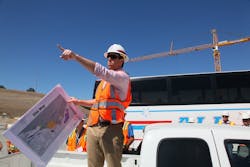New Housing Development Costs Slow Construction
It isn’t just buyers around the country that are feeling the pinch in terms of house prices, many builders are facing similar hurdles as homes have become increasingly expensive to build. These increasing costs are due to a surfeit of new development and compliance costs that have appeared over the past decade.
In an effort to gain a better understanding of what, precisely, these costs were, Realestateconsulting.com surveyed over 100 home building executives across the country asking for specific examples of new home construction costs that did not exist 10 years ago. Frustrated builders were not shy about providing examples.
Some of the new costs that were repeatedly mentioned by builders across the country were erosion control costs, energy code costs, and fire sprinkler costs. Erosion control costs can be upwards of $5,000 per house, even for homes in areas that rarely get rain. The new energy code costs can be $2,500 per house, and some builders cited costs upwards of $8,000 per house. At least seven of the markets that were surveyed mentioned new requirements to install sprinklers in townhomes and single-family homes with a cost between $5,000 and $10,000.
On a state-by-state basis, Florida and California seem to have the most new costs associated with building there. For example, new “beautification” landscaping requirements, raising homes 1 foot above flood elevations per new FEMA maps, and additional school fees can add up to over $14,000 per house in some Florida cities. California has some even higher costs associated with building; a few Bay Area municipalities now have building and impact fees that can exceed $120,000 per home. Additionally, new greenhouse-gas fees and other green requirements can cost up to $6,000 per house.
With homes becoming more and more expensive to build, it is going to be increasingly difficult for builders to construct affordable entry-level homes while maintaining a profit margin. With all of these extra expenses, it is no wonder builders have been hesitant to focus on the starter home segment.
For the full results of the survey, click the link below.
